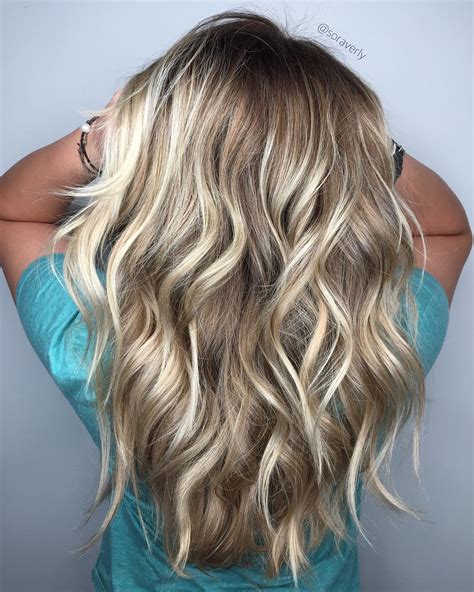Balayage is a French hair coloring technique that creates a natural, sun-kissed look. It involves hand-painting color onto the hair, allowing for a seamless blend of shades. This technique has gained immense popularity due to its versatility and low-maintenance nature.

What is Balayage Hair Color?
Balayage is derived from the French word “balayer,” which means “to sweep.” This hair coloring method is applied using a brush to create a soft, graduated blend of colors. The technique allows for a wide range of customization, enabling you to achieve anything from subtle highlights to bold, contrasting tones.
Benefits of Balayage Hair Color
- Natural look: Balayage mimics the way natural hair lightens in the sun, resulting in a seamless, sun-kissed appearance.
- Low maintenance: The gradual transition between shades means that balayage requires less frequent touch-ups compared to traditional hair coloring techniques.
- Versatile: Balayage can be customized to suit any hair color, texture, or length.
- Damage-free: The technique involves minimal use of bleach, making it less damaging to the hair than other coloring methods.
Types of Balayage Hair Color
There are numerous variations of balayage hair color, each offering a unique look.
- Classic balayage: This involves painting highlights throughout the hair, blending them seamlessly from roots to ends.
- Ombré balayage: The color transition is more pronounced, with darker roots gradually fading into lighter tips.
- Reverse balayage: This technique reverses the traditional balayage process, creating a darker base with lighter ends.
- Foilayage: A combination of balayage and foiling, where highlights are painted onto the hair before being wrapped in foil to enhance lift.
Choosing the Perfect Balayage Hair Color for You
To choose the most flattering balayage hair color, consider the following factors:
- Skin tone: Warm skin tones pair well with golden or caramel shades, while cool skin tones suit ash or beige hues.
- Eye color: Blue eyes complement cool tones like blonde or silver, while brown eyes look stunning with warm coppers or auburns.
- Hair length: Long hair can accommodate bolder, more dramatic balayage styles, while shorter hair is more suited to subtle, natural-looking highlights.
Tips for Achieving the Perfect Balayage Hair Color
- Consult a professional: Balayage is best left to experienced hairstylists who can customize the technique to suit your individual needs.
- Use high-quality products: Invest in color-safe shampoos and conditioners to maintain the vibrancy of your balayage.
- Avoid over-washing: Excessive washing can strip away the color, so limit washing to a few times per week.
- Protect from sun exposure: UV rays can damage the color and cause it to fade, so protect your hair with a UV protectant spray or hat.
Common Mistakes to Avoid
- Home dye jobs: Balayage is a complex technique that should not be attempted at home.
- Bleaching too much: Excessive bleaching can damage the hair and compromise its health.
- Overlapping highlights: The highlights should be seamless and blended, so avoid creating sharp, overlapping lines.
- Using the wrong products: Color-treated hair requires specialized care, so avoid using harsh or stripping products.
Balayage Hair Color for Different Hair Lengths
Short Hair
- Pixie cut: Subtle face-framing highlights can brighten up a pixie cut and add definition.
- Bob: Reverse balayage creates a modern, edgy look on blunt bobs.
Medium Hair
- Lob: Classic balayage adds volume and movement to long bobs.
- Shoulder-length: Layers and highlights work together to create a flirty, sun-kissed look.
Long Hair
- Long layers: Balayage accentuates the length and creates a glamorous, flowing effect.
- Ombré: A gradual transition from dark to light is perfect for adding depth and dimension to long hair.
Conclusion
Balayage hair color is a versatile and stunning technique that can enhance any hair type and length. By choosing the right color and following proper care tips, you can achieve a natural-looking, sun-kissed look that will turn heads. Remember to consult a professional hairstylist for expert advice and to avoid common mistakes.
